Adjustment of the pumping station: rules and algorithm for setting up the equipment
For a stable supply of water with the required pressure values, it is not enough just to buy a pump station. The equipment must also be set up, started up and properly operated. Admit, not all of us are familiar with the intricacies of tuning. And the prospect of spoiling the devices with incorrect actions is not too attractive, agree?
We are ready to share with you valuable information on how to adjust the pumping station. In our article, methods and rules for eliminating work irregularities associated with insufficiently high pressure are given.
You will learn about the causes of the pressure drop and get acquainted with the methods to eliminate them. Graphic and photo applications will explain how to properly configure pumping equipment.
The content of the article:
Features of the pump station
A ready-made pump station equipped by the manufacturer is a mechanism for forced water supply. The scheme of its work to the limit is simple.
The pump pumps water into an elastic tank located inside the accumulator, also called the hydraulic tank. When filled with water, it stretches and presses on that part of the hydraulic tank that is filled with air or gas. Pressure, reaching a certain level, causes the pump to turn off.
During the intake of water, the pressure in the system drops, and at a certain moment, when the values set by the owner are reached, the pump starts working again. The relay is responsible for turning the device off and on, the pressure level is controlled by a pressure gauge.
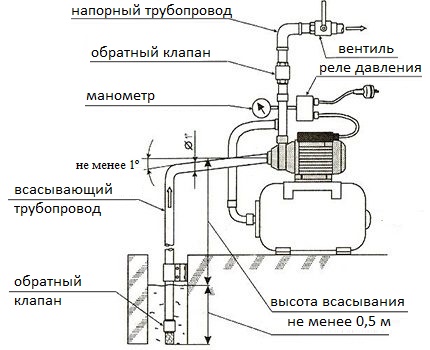
More details with the principle of operation, varieties and field-proven installation schemes pumping station will familiarize us with the article recommended by us.
Causes of hardware problems
The statistics of malfunctions in the operation of household pumping stations says that most often problems arise due to a violation of the integrity of the membrane accumulator, piping, water or air leakage, and also due to various contaminants in the system.
The need for intervention in its work can arise due to many reasons:
- Sand and various substances dissolved in water can cause corrosion, lead to malfunctions and reduce the performance of equipment. To prevent clogging of the device, water purifying filters must be used.
- A decrease in air pressure in the station causes frequent pump operation and premature wear. It is recommended that you measure the air pressure from time to time and adjust it if necessary.
- The lack of tightness of the joints of the suction pipe is the reason that the engine runs without shutting down, but cannot pump the liquid.
- Incorrect adjustment of the pressure of the pumping station can also cause inconvenience and even breakdowns in the system.
To extend the life of the station, it is recommended to periodically conduct an audit. Any adjustment work must be started by disconnecting from the mains and draining the water.
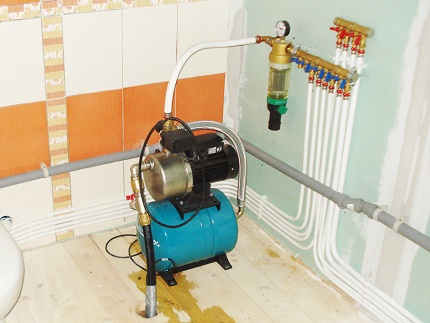
Error correction in work
Before starting a more serious intervention in the operation of the equipment, it is necessary to take the simplest measures - clean the filters, eliminate leaks. If they do not give results, then proceed to further steps, trying to identify the root cause.
The next thing to do is adjust the pressure in the accumulator tank and adjust pressure switch.
Below are the most common disturbances in the operation of a household pumping station, which the user can try to solve on their own. For more serious problems, you must contact the service center.
Violation of the operating rules
If the station is continuously working without shutting down, the probable cause is incorrect adjustment of the relay - a high shutdown pressure is set. It also happens that the engine is running, but the station does not pump water.
The reason may lie in the following:
- At first start-up, the pump was not filled with water. It is necessary to correct the situation by pouring water through a special funnel.
- The integrity of the pipe is broken or an air plug has formed in the pipe or in the suction valve. To detect a specific reason, it is necessary to make sure that: the inlet valve and all connections are tight, there are no bends, contractions, hydraulic locks along the entire length of the suction pipe. All malfunctions are eliminated, if necessary, replace damaged areas.
- The equipment works without access to water (dry). It is necessary to check why it is not there or to identify and eliminate other causes.
- Pipeline clogged - it is necessary to clean the system from contamination.
It happens that the station very often triggers and turns off. Most likely this is due to a damaged membrane (then it is necessary to replace it), or the system is missing pressure required for work. In the latter case, it is necessary to measure the presence of air, check the tank for cracks and damage.
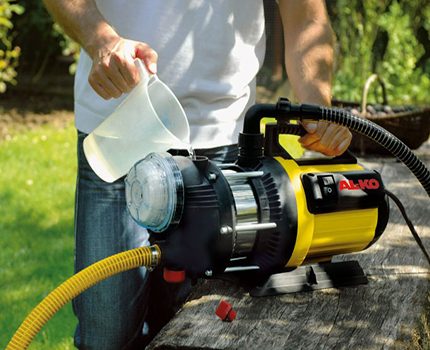
Less likely, but it may happen that it is open and locked. check valve due to the entry of debris or a foreign object. In such a situation, it is necessary to disassemble the pipeline in the area of possible clogging and eliminate the problem.
Engine malfunctions
The engine of the household station does not work and does not make noise, possibly for the following reasons:
- The equipment is disconnected from the power supply or there is no mains voltage. It is necessary to check the wiring diagram.
- Blown fuse. In this case, you need to replace the item.
- If it is not possible to turn the fan wheel, it means it is jammed. Find out why.
- The relay is damaged. You need to try to adjust it or, if it fails, replace it with a new one.
Malfunctions in the engine most often force the user to use the services of a service center.
Problems with water pressure in the system
The insufficient water pressure in the system can be explained by several reasons:
- The water or air pressure in the system is set to an unacceptably low value. Then it is necessary to configure the relay in accordance with the recommended parameters.
- The piping or impeller of the pump is blocked. Cleaning the elements of the pumping station from contamination may help to solve the problem.
- Air enters the pipeline. Checking the elements of the pipeline and their connections for leaks can confirm or deny this version.
Poor water supply is also due to the fact that air is drawn in due to loose connections of the water pipes or the water level has fallen so much that air is pumped into the system when it is drawn in.
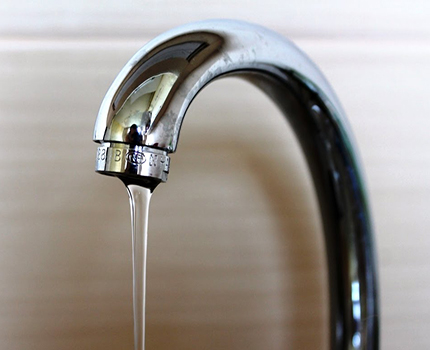
Revision of the storage tank
Starting work on adjusting the equipment, disconnect the system from the network, close the pressure valve on the water intake side. Unscrew the tap and drain the water, and the residues are lowered through the pressure hose, disconnecting it from membrane tank. First check the air pressure in the tank of the accumulator.
The role of the accumulator in the system
The membrane tank of the pumping station is, in fact, a metal tank with a rubber bulb located inside, which is designed to collect water.
Air is pumped into the free space between the rubber bulb and the tank walls. In some models of hydraulic accumulators, the tank is divided in half by a membrane, which delimits the tank into two compartments - for water and air.
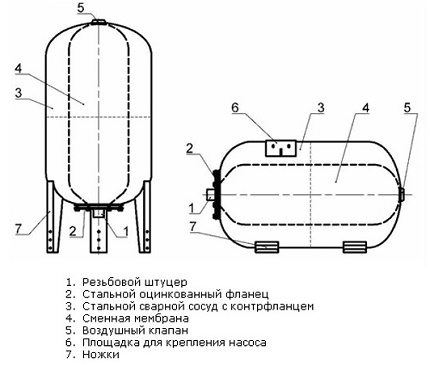
The more water enters the device, the more it compresses the air, increasing its pressure, which tends to push the water out of the tank. This allows you to maintain a stable pressure of water even during inactivity of the pump.
The hydraulic accumulator requires regular maintenance, removal of air from the pear, which enters it together with water in the form of small bubbles and gradually accumulates there, reducing the usable volume.
For this, a special valve is provided on top of large tanks. With small containers, you have to trick in order to remove air: turn off the system and drain and fill the tank several times.
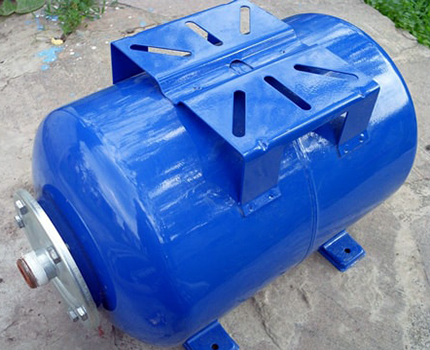
Air pressure control
Although the manufacturer adjusts all the elements of the pumping station at the production stage, it is necessary to double-check the pressure even in new equipment, since at the time of sale it may slightly decrease. The device that is being operated is inspected up to two times per year.
For measurements, the most accurate pressure gauge is used, because even a small error of 0.5 bar can affect the operation of the equipment. If it is possible to use a car gauge, with a scale, with the lowest graduation, this will provide more reliable results.
The air pressure indicator in the diaphragm tank must correspond to 0.9 times the switching pressure of the pump station (set using a relay). For tanks with different volumes, the indicator can be from one to two bars. The adjustment is carried out through the nipple, pumping or bleeding excess air.
For normal operation, the station is equipped with mandatory control and regulatory devices:
The less air is pumped into the system, the more water it can accumulate. The water pressure will be strong when the tank is full, and more and more weaken when the water is drawn.
If such differences are comfortable for the consumer, then you can leave the pressure at the lowest acceptable level, but not less than 1 bar.A lower value can cause friction of the pear filled with water against the tank wall and damage it.
To install in water supply system strong water pressure, it is necessary to fix the air pressure within about 1.5 bar. So, the difference in pressure with a filled and empty tank will be less noticeable, providing an even and strong flow of water.
Using a relay to adjust pressure
Responsible for the automation of the system pressure switch - a device that controls the pumping station, performing the function of turning on and off the device. It also prevents the system from creating excessive pressure.
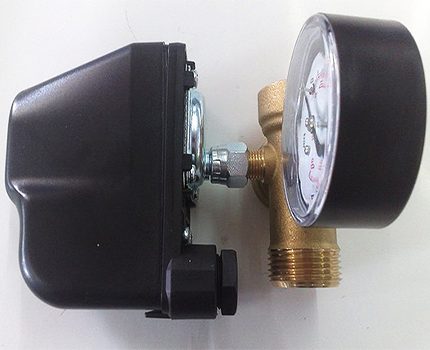
# 1: Principle of operation of the pressure sensor
The main element of the relay is a group of contacts, which is mounted on a metal base and is responsible for turning the device on and off.
Nearby are two springs of different sizes to adjust the pressure inside the system. From below, a membrane cover is attached to the metal base, under which the membrane itself and the metal piston are placed. From above everything is closed with a plastic cap.
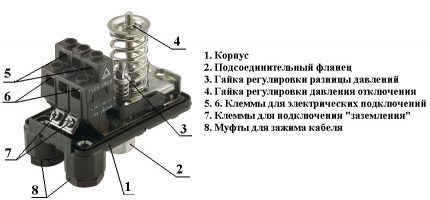
In the process of operating the current device, several stages can be distinguished:
- When the tap is turned on, water for some time enters the plumbing point from the filled tank. In this case, the pressure present in the system gradually begins to drop, and the membrane ceases to press on the piston. The contact closes, the pump turns on.
- The pump works by pumping water to the consumer, and when all the taps are turned off, it fills the tank with water.
- When the accumulator tank is gradually filled, pressure increases, and it begins to act on the membrane, and it presses on the piston. As a result, the contacts open and the pump stops.
The frequency of switching on the station, the pressure of the water, and even the service life of the equipment depend on how the relay is configured. If the parameters are set incorrectly, the pump will not work at all or will run continuously.
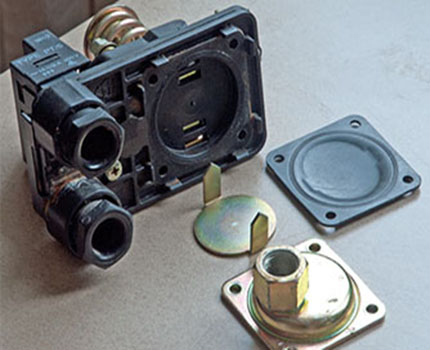
# 2: Adjustment and calculation of the required pressure
The new device already has the factory settings of the relay, but, nevertheless, it is better to additionally check them. Before setting up, it is necessary to find out the values recommended by the manufacturer for setting the permissible pressure threshold (for closing and opening contacts).
When pump station breakdown, due to improper adjustment, the manufacturer has the full right to refuse its warranty.
The calculation of the permissible pressure, when turning on / off the device, the manufacturer carries out taking into account the expected features of operation. They are taken into account in the development of operating parameters for different models of pumping stations.
The inclusion value is equal to the sum:
- The required pressure at the highest point in the water supply system where water is taken;
- Differences between the height of the highest point of water withdrawal and the pump;
- Losses in the water pressure pipeline.
The shutdown rate is calculated as follows: plus one and take one and a half bar to the shutdown pressure. At the same time, it must not be allowed for the shutdown pressure to exceed the maximum permissible pressure that occurs at the pipeline outlet from the pump.

# 3: Setting Recommended Settings
Before changing the settings, it is necessary to fix the previous indicators using a manometer. Turning on the pump, record the pressure values at the time of switching off and on. This will help determine which direction to adjust - towards decreasing or increasing.
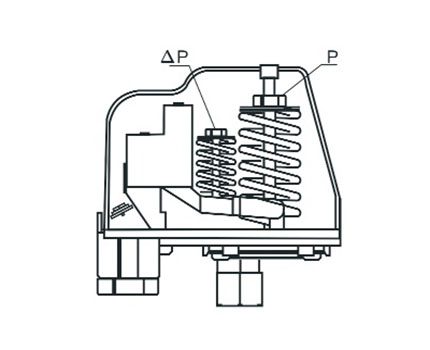
Further actions have the following priority:
- Disconnect the station from power, drain the water and open the relay cover with a wrench.
- The pump start pressure is controlled by rotating the nut that holds the large spring (P). Twisting it in the clockwise direction, they achieve compression of the spring and set the required switching pressure. In various models of the device, permissible values can range from 1.1 to 2.2 bar.
- By turning the small nut (∆P) in the clockwise direction, you can increase the gap between the shut-off pressure and the turn-on pressure of the device, which is usually 1 bar. Thus, the switch-off pressure can be fixed at values in the range from 2.2 bar to 3.3 bar.
An important nuance is that a small spring does not regulate the trip threshold, as some people mistakenly understand.
It sets the delta between the values of the inclusion of the station, and its shutdown. That is, a fully weakened spring will not make a difference - the delta will be zero and the on and off values will be the same. But the more it is delayed, the greater the difference between them will be.
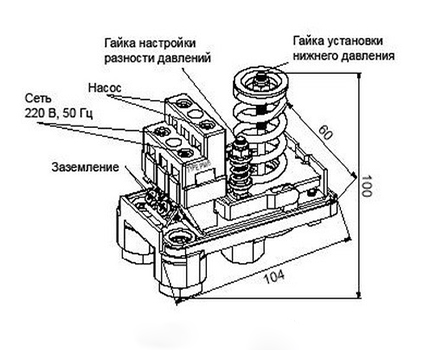
Check the correctness of the set indicators using a manometer. If it was not possible to achieve the required values on the first attempt, adjustment continues.
# 4: Select non-standard pressure values
You can set a different pressure level in the device, different from the manufacturer’s recommendations, adjusting the equipment to individual user requirements. By increasing the range when turning on / off, they achieve more rare station responses.
This makes the service of the device longer, but makes the water pressure uneven. By reducing the difference, they achieve a stable pressure, but this way the pump will operate more often.
Conclusions and useful video on the topic
How to adjust the station pressure, video demonstrates:
Video on what to do if the station often triggers:
Carrying out an independent adjustment of the pumping station, it must be borne in mind that sometimes changes in the factory recommendations can worsen the operation of the water supply system. Pump, hoses, plumbing fixtures - all have pressure limits, the violation of which will lead to breakdowns. Therefore, before embarking on independent actions, it is better to ask for advice from an experienced specialist.
Please leave comments in the block below. Share your personal experience in the installation and operation of pumping stations, as well as in the implementation of their settings. Ask questions, report shortcomings in the text, post a photo on the topic of the article.

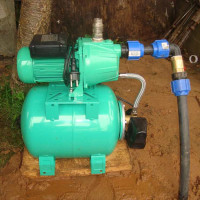 Ejector for a pumping station: operating principle, device, installation rules
Ejector for a pumping station: operating principle, device, installation rules 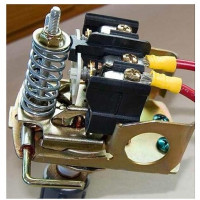 How a pressure switch for a pumping station works + rules and features of its adjustment
How a pressure switch for a pumping station works + rules and features of its adjustment 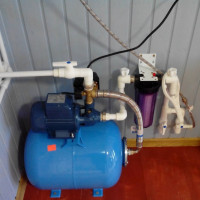 Connecting a pumping station to a well: rules for organizing autonomous water supply
Connecting a pumping station to a well: rules for organizing autonomous water supply 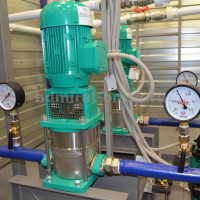 Principle of operation and design of a typical pumping station for water supply
Principle of operation and design of a typical pumping station for water supply 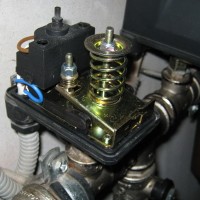 Adjusting the pressure switch for the accumulator: instructing on the equipment setup + expert advice
Adjusting the pressure switch for the accumulator: instructing on the equipment setup + expert advice 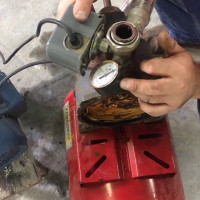 Do-it-yourself pump station repair: typical malfunctions and solutions
Do-it-yourself pump station repair: typical malfunctions and solutions  How much does it cost to connect gas to a private house: the price of organizing gas supply
How much does it cost to connect gas to a private house: the price of organizing gas supply  The best washing machines with dryer: model rating and customer tips
The best washing machines with dryer: model rating and customer tips  What is the color temperature of light and the nuances of choosing the temperature of the lamps to suit your needs
What is the color temperature of light and the nuances of choosing the temperature of the lamps to suit your needs  Replacement of a geyser in an apartment: replacement paperwork + basic norms and requirements
Replacement of a geyser in an apartment: replacement paperwork + basic norms and requirements
In my country house it very often happens that they turn off the light.And an old water pump is installed, which is not regulated in any way and sometimes even spits with air. I wanted to know from you whether it is possible to install the units so that you can regulate the pressure and connect a silent device with independent electric power supply to it ?! I just saw such a device on TV.
Hello. Yes, there are such devices, the principle of which is to use the energy of water, if we understand you correctly. We signaled our editor-in-chief, perhaps such an article will appear on the site soon especially for you.
We have an apartment on the top floor, maybe this is due to reduced pressure. Water flows from the taps, but without much pressure, if turned on at full capacity. I persuade my husband to install a pumping station as a boost equipment. Now I doubt that such work can be done independently, without plumbing. It’s easy to connect, but understanding all these adjustments and settings is much more difficult.
Elena, there are other devices for yours. Pressure boosting pumps, fully automatic and compact.
Hello. You live in an apartment building and this is not your headache, but the Criminal Code. The standard water pressure in the apartment is regulated by SNiP 2.04.2-84 as amended for 2012.
According to the rules, the minimum pressure of the water column on the 1st floor is 1 bar, with each subsequent floor + 0.4 bar. If it does not comply with your norm, file a written complaint with the Criminal Code, let them come in, measure and correct them or write a refusal with a justification that you will appeal to the housing inspectorate.
How to drain the water from the accumulator?
Completely only through disassembly.
By parsing and scooping out a small cup, and then with a rag. Recently I did this when a rubber bulb burst.
Hello. Through the drainage system (automatic drain valve or any mechanical devices), if the tank is equipped with one. The second way is to disconnect through the water supply pipe and drain the water directly from the pear, it is desirable, of course, that the connection goes through the "American", it is easier to do this.
How to adjust the upper pressure threshold? Bottom successfully configured. Turns on at 1.5 bar. And the top one can’t. It pumps itself to almost 4 bar ... And the bolt on a small spring is unscrewed. Completely. And she still pumps up to 4. I need up to 3x.
Hello. The thing is that the relay with which the pressure is adjusted is not easy to set up if there is no experience. But in the future, this should not cause problems.
The “P” indicator is responsible for the upper pressure threshold, you need to adjust it, do not touch the compression nut with the “ΔP” indicator (lower threshold). Most likely, the problem is in the incorrect adjustment of the spring (relay). I enclose a clear photo. If something doesn’t work out for you, then attach a photo, we will think further.
I did not find a topic. Tell me, after turning off the pump, let's say 3 atm., The pressure in the system gradually drops and 2 atm remains. This is normal?
It depends on what pressure parameters you have on the relay. In total, as I understand it, the pressure drops after turning off the pump from 3 atm. yes 2 atm. There is another question about the system in which the pump is used: heating, irrigation, water supply. For the first type - this is a problem that needs to be solved, for the other two - naturally.
Can give advice on how to solve the problem.
When pumping pressure into the system (automatic watering), the pumping station reaching 5 Bar turns off and turns on again after 1-2 seconds. This on / off is repeated an infinite number of times. I suppose that this is due to the unbalancing of the air pressure in the accumulator and the water pressure in the system (autowatering line).
If the hydraulic accumulator is shut off (cut off from the system with a tap), the pump is switched off without comment. In a 50 liter accumulator, air pressure is inflated 1.5 bar (as recommended by the manufacturer). The pump station (AL KO 6000 pump) uses an electronic hydraulic controller (AL KO). The on pressure is 0.8 bar and the off pressure is 5 bar. I tried to make a pressure of 0.8 bar in the accumulator. The problem of repeated on / off when reaching 5 bar does not solve. What do you advise to do?
Hello. In your case, the problem is directly in the accumulator. Since judging by the described symptoms, the snag is in the storage tank, I advise you to experiment with the pressure inside the accumulator in both directions (more / less). Perhaps it makes sense to try a mechanical pressure switch instead of an electronic hydraulic controller. Calibration of pressure indicators in the pump station itself can also help.
How to set the pump on / off if a new relay without factory settings. Pressure in the accumulator 1b bar. On the old relay, it turned on at 0.9, turned off at 1.5 bar. Vertical lift 13.8 m.
Thanks for the input data on the pressure in the accumulator, according to the indicators of the old relay and regarding the height of the vertical lift. But alas, for accurate consultation this is not enough. To give precise advice on setting up the pressure switch, you need to know the current model, as well as which pumping station is used.
Without this data, I can offer general tips for setting up a pressure switch. Consider the example of a standard RD-5, where 1.5 atm are set from the factory. on inclusion (big spring) and 3 atm. on off (small spring).
To reduce the threshold, you need to rotate a large spring counterclockwise. Do not forget that in parallel with this you need to adjust the small spring. You can look at the factory settings on the manufacturer's website. But if they are knocked down, then you have to adjust by the method of “scientific poking”, as they say. Also, you must have an air pressure in the accumulator of at least 2.5 atm in order to correctly adjust the taxiway.
Speroni station, I can’t set up the correct shutdown. It is turned on by hearing then when it gives all the water out of the accumulator, you add it so that the switch-on threshold comes earlier, generally stops turning on. Give advice on how to be.
Why does the description contradict the video? On and off is of great importance. And typos are strictly forbidden.
Thank you for your attention, but still it is not clear what kind of typo we are talking about? The article describes everything in detail. And the moments with turning the pump station on and off are not mixed up.
As for the video itself, it gives practical advice, but the title of the video itself is a little inaccurate: “The pump station often turns on and off.” However, this does not greatly affect the essence.
And in the article, as well as in the video, practical tips are given to address the causes of frequent on / off pumping equipment:
- adjustment of the expansion tank;
- membrane replacement (must be done once a year).
About setting pressure switch the answer is already written above and in another video we are also talking about this.